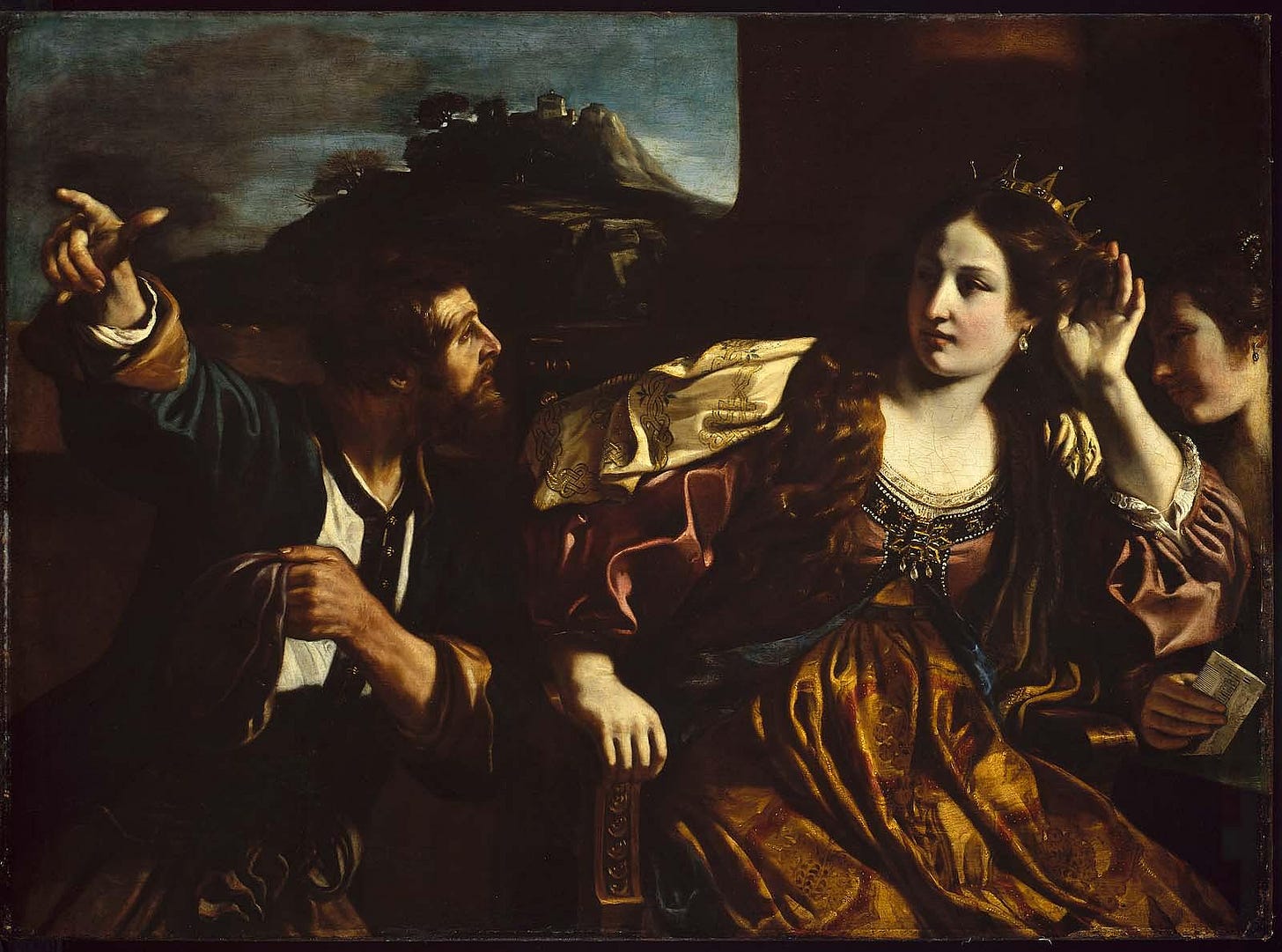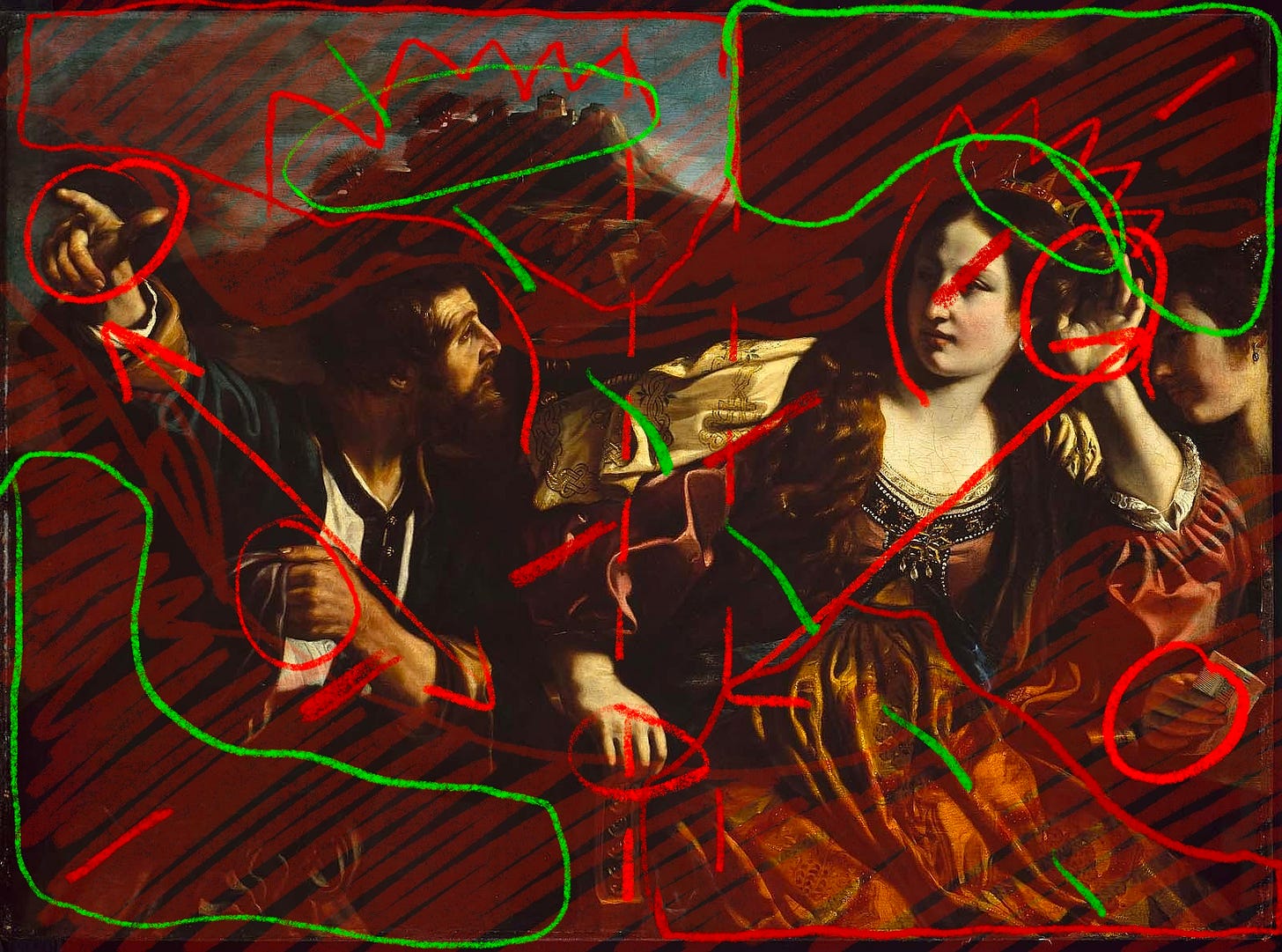Art Analysis: Semiramis Receiving Word of the Revolt of Babylon
A visual and written analysis of Guercino's painting.
This analysis was originally written and formatted for Twitter. Click the link HERE to read the original Twitter Thread.
What’s so great about Renaissance paintings?
I want to create striking art like Guercino’s painting of Semiramis.
I analyzed tons of buildings & artwork as an architect & artist 👩🎨
Let’s study this painting and see why Guercino is one of the most dynamic artists of his time:
Renaissance artists aimed to capture an individual’s experience within the beautifully mysterious natural world.
In this painting, Guercino captures the Assyrian Queen, Semiramis, getting informed of a revolt as she’s getting her hair done (how inconvenient).
I first saw this at Boston’s Museum of Fine Arts. I was drawn to the dramatic contrast in lighting (AKA chiaroscuro).
The lighting illuminates both the messenger (left) & queen (right) and draws attention to their posture, draping of their clothing, and movement in the foreground.
Symmetry is EVERYWHERE in this painting. NO ONE is centered on the painting (unusual for Renaissance art). The messenger and Queen are on opposite sides of the painting, their faces and gestures mirror each other.
There’s also diagonal symmetries in this painting.
First there’s diagonal symmetry of depth: the Queen’s dress as the closest element in the foreground vs. the hill as the farthest element in the background.
Second, there’s diagonal symmetry of shadows (the messenger’s clothes and the wall behind the queen) used to frame the messenger and queen as the most important subjects in this painting.
The Number 5:
5 hands of 5 fingers,
5 prongs on the crown,
and 5 objects on the hill.
Speaking of crowns…more mirrored symmetry!
Mirroring each other as opposites, the crown tops the royalty (queen & maid) occupying the right side of the painting, while the structures on the hill (left) crown the kingdom (land & messenger) occupying the left side.
At a first glance, a Renaissance painting appears as just a striking image. But in reality, the artist uses overlapping techniques to compose shapes and symbols that slowly reveal themselves to the viewer.
Did you discover any other little Easter Eggs in this painting?
Are there any specific artists or artworks you’d like me to analyze?
Thanks for reading! Follow me for more threads like this.
(Thank’s @angieeecreates for feedback on this thread 🥰)













Woah! So many symmetries here that are weaved in so naturally into the painting.